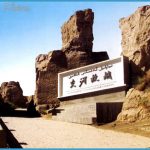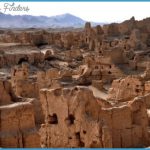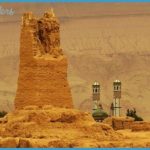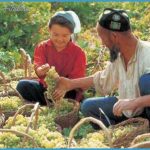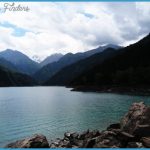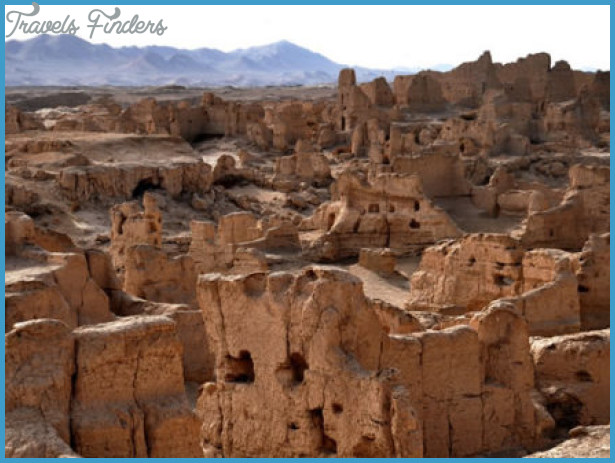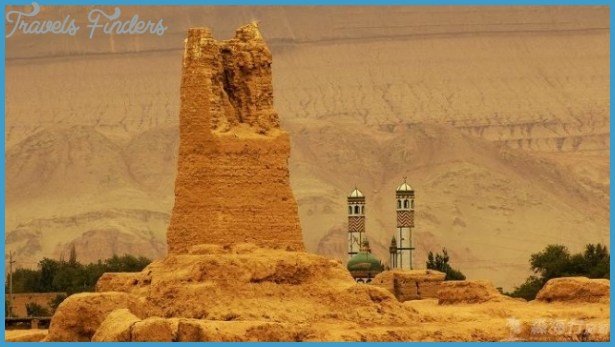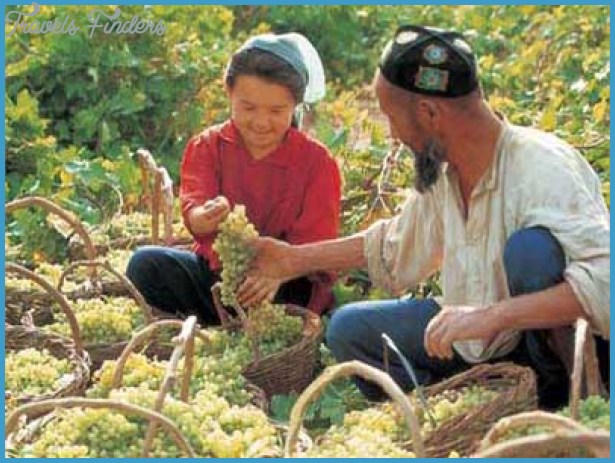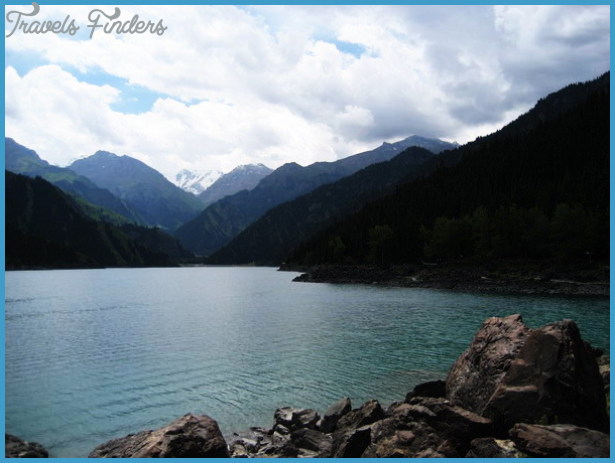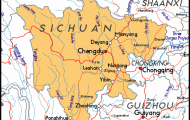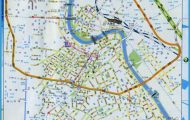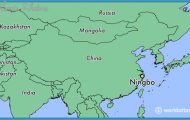Area: 10,300sq.km/3977sq. miles. Population: 180,000
Turpan lies in north-west China, at 89°09’E and 42°55’N, in the centre ofthe Autonomous Region of Xinjiang, in the valley ofthe same name; the latter covers an area of 50,000sq.km/19,300sq. miles and, being 154m/505ft below sea-level, is the second lowest region on earth after the Dead Sea. Turpan is three hours by train or five hours by bus from the regional capital Uriimqi.
The average summer temperature is 32°C/90°F, but in July this sometimes reaches as high as 50°C/122°F. The winters are cold and dry. The number of frost-free days is between 220 and 270. Average annual rainfall is a mere 10mm/0-4in.
Over the years, in attempts to counteract the drought conditions, more than 1000 wells and an underground canal network more than 3000km/1900 miles long have been dug, to conduct water from Tianshin into the Turpan Valley.
The main crops grown are grapes, melons and cotton, the “three treasures of theTurpan Valley”. The very sweet and seedless Turpan grapes are dried to make Xinjiang raisins which are sold throughout China and abroad. The sweet Hami melons, which have been grown here for over 1000 years and can weigh as much as 15kg/33lb, are famous throughout the country.
TheTurpan district on the Silk Road was known as a busy trading region as long as 2200 years ago.
Between the 2nd c. b.c. and the 5th c. a.d. the rulers of the Cheshi kingdom resided in Jiaohe, 10km/6 miles west of present-day Turpan. Around the middle ofthe 7th c. the Tang dynasty established a government in Turpan to ensure better control ofthe surrounding regions.
The Emin Mosque was built in the Afghanistan style in the second half of the 18th c. Its tapering minaret (sugong ta in Chinese) is 44m/145ft high.
The Museum contains some valuable pre-15th c. finds from the Astana Tombs.
2200 years ago Jiaohe, 10km/6 miles west of Turpan, was the capital ofthe Cheshi kingdom. Afterthe 10th c. it declined rapidly, and in the 14th c. was razed to the ground by Genghis Khan’s armies.
The Jiaohe site measures 1km/1100yd from north to south and 300m/ 330yd from east to west. Remains from the Tang period (618-907) include a number of roofless houses, a large but collapsed temple and several roads leading to a main street.
Remains of Buddhist statues can still be seen in the temple niches.
On the road from Turpan to Gaochang stands the Mount of Flames, so called because the sun shining on its reddish rocks makes them glow as if on fire. The rocks are scarred by deep furrows formed by the action of flowing water during a wet period in a prehistoric age. In summer temperatures of more than 50°C/122°F are reached here.
The mountain is well-known to the Chinese through the 16th c. novel “Journey to the West” (“Xiyou Ji”) by Wu Cheng’en.
Ruins of the Gaochang, 40km/25 miles south-east of Turpan, was built about 2100 years town of Gaochang ago. In a.d. 630 the monk Xuanzang stayed here during his pilgrimage to (Gaochang Yizhi) India.
In the mid-9th c. a tribe of Uigurs emigrated from what is now Mongolia, established a kingdom here and chose Gaochang as their capital. However, the settlement became deserted in the 14th c.
Today little remains of Gaochang’s former glory – just the towns walls, made of compressed clay, 5m/16ft tall and some 5km/3 miles long; in the south-west, the ruins of a temple complex which once covered an area of 1ha/2’/2 acres; the network of streets which divided Gaochang into three sections, the outer town, the inner town and the palace district, a lay-out which is reminiscent of that of Chang’an, the seat of the Tang government (618-907).
To the north-west of Gaochang lie the Astana Tombs, where the dead were buried from the 3rd to 9th c.
Hundreds of tombs have been uncovered, and three are open to visitors.
Near Turpan lie the Thousand Buddha Caves.
The best known are undoubtedly those at Bezeklik(some 50km/30 miles north-east of Turpan), a collection of retreats once inhabited by Buddhist monks. Many of the important wall-paintings, a testimony to the heyday of Chinese Buddhism, were discovered by European archaeologists, many of them German, prior to the First World War.
In all visitors can see 57 caves, all numbered, which contain fragments of frescos dating from the 6th to the 14th c. and portraying Buddhist themes.

